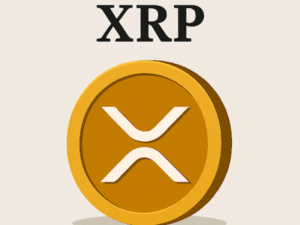
Hyperliquid is facing one of the most complex challenges since its inception related to the JELLY token and governance.
The sudden delisting of perpetual contracts linked to JELLY triggered a chain reaction of criticism, loss of trust, and market volatility. However, it also became the starting point for a profound renewal of the protocol and its governance system.
What happened with JELLY on Hyperliquid?
Everything began with suspicious movements in the markets related to the JELLY token. In response to these anomalous dynamics, the validators of the Hyperliquid network voted for the immediate delisting of the perpetual contracts associated with the asset.
A drastic decision, but deemed necessary to protect users from potential manipulations and maintain the integrity of the protocol. The removal of the contracts was approved through the internal voting mechanism of the validators.
To limit the economic damage suffered by the users involved, the Hyper Foundation has announced an automatic refund program based on on-chain data, excluding however the addresses identified as suspicious or linked to fraudulent behavior.
The criticisms and the comparison with FTX
The intervention, although justified according to the Hyperliquid team, has raised strong criticisms in the crypto community, sparking a heated debate on transparency and the decentralization of the protocol.
Among the most critical voices, stands out that of Gracy Chen, CEO of Bitget, one of the main centralized exchanges in the sector. In a tweet that went viral, Chen compared what happened on Hyperliquid to the collapse of FTX, highlighting how, even in environments that define themselves as decentralized, decision-making power is sometimes concentrated in a few hands.
According to Chen, the unilateral delisting action without a clear process of public consensus reflects a governance that is still immature and potentially dangerous, just like in the FTX case, where centralized decisions led to disaster.
The criticism touches on a key point: how truly decentralized is a DeFi platform if crucial decisions can be made by a small number of validators without notice?
The responses of Hyperliquid: on-chain governance and new rules
Public pressure has pushed Hyperliquid to respond with concrete actions. A new risk management framework has indeed been introduced, with the aim of increasing transparency and strengthening decentralization.
Among the main innovations of Hyperliquid and its governance
• On-chain voting system for delistings: every decision will be made directly on the blockchain, avoiding off-chain coordination. If a quorum of stake among validators is reached, the delisting action will be executed automatically through the HyperCore engine.
• Public announcement of voting intentions: in the upcoming updates, validators will be required to communicate their decisions in advance, allowing the community to prepare and express opinions.
On March 29, a test was conducted on the delisting of MYRO to demonstrate the functionality of the new system. Validators 2, 3, 4, and 5 cast their votes, while validator 1 chose to abstain, awaiting the completion of the stake delegation program.
The impact on the market: HYPE attempts the recovery
The HYPE token, native to the Hyperliquid platform, reacted negatively to the incident. In the days following the delisting of JELLY, the price lost about 28% of its value.
However, the situation seems to be slowly stabilizing:
• The bear pressure is decreasing
• A technical support zone has formed around 12.20 dollars
• The Open Interest has started to rise again, indicating a renewed interest from investors
If the current support holds, an attempt at trend reversal and a return of confidence in the market cannot be ruled out.
“`htmlWhat to expect now from Hyperliquid?
“`Hyperliquid has already announced a series of future updates to strengthen its infrastructure:
• Public governance dashboard to follow all the decisions of the validators
• On-chain audit tools, which will allow the community to verify every transaction and vote
• Improvements to the interfaces for stake delegation, facilitating participation for less experienced users
The objective is clear: to build a transparent, secure ecosystem truly controlled by its community.
Reflection: real decentralization or just narrative?
The episode of JELLY is yet another demonstration that decentralization is not an automatic condition, but a continuous process that requires attention, constant updates, and the willingness to truly share decision-making power.
The comparison with FTX, although strong, highlights an uncomfortable truth: even in DeFi protocols, the risk of centralization exists — and it manifests precisely when decisions are made in opaque environments or without consulting the user base.
Hyperliquid has reacted proactively, but it will be its ability to maintain these commitments over time that will determine its success. In an industry where trust is everything, the real challenge is not only technological, but cultural: building participative, transparent, and resilient governance.

 2 days ago
16
2 days ago
16









 English (US) ·
English (US) ·